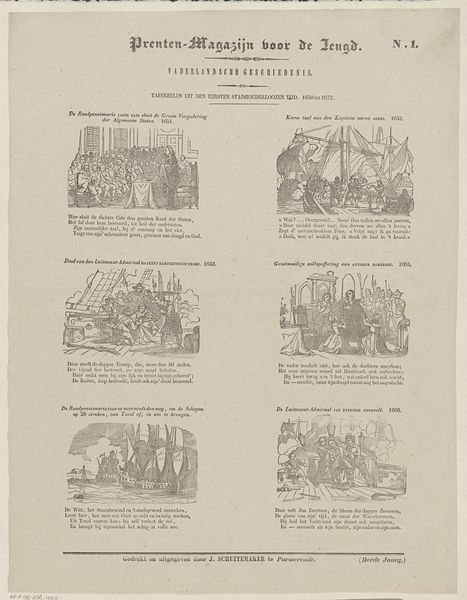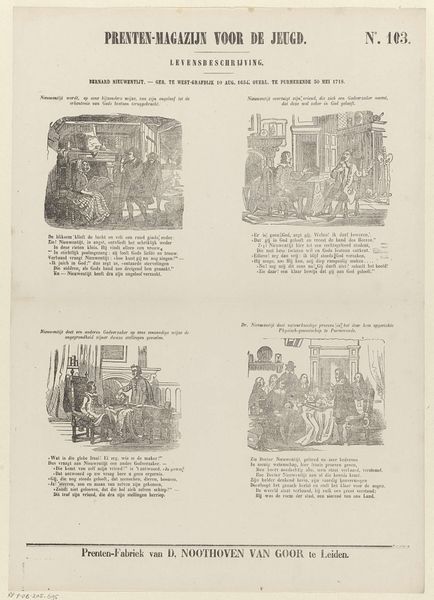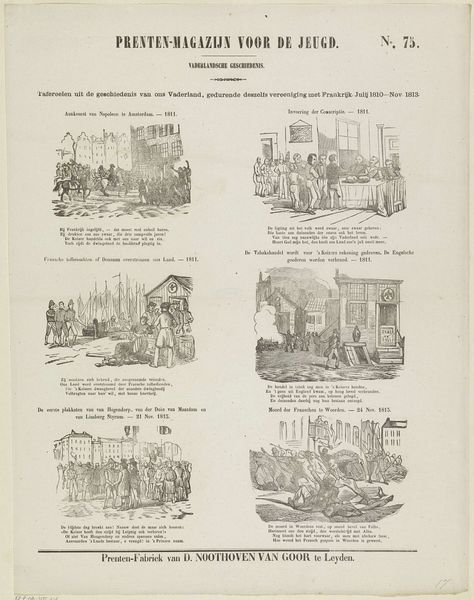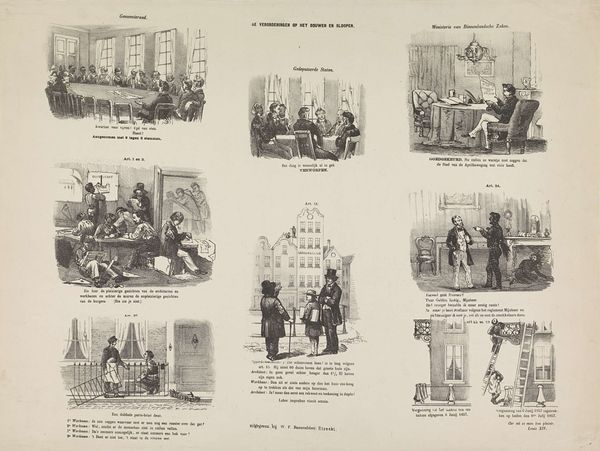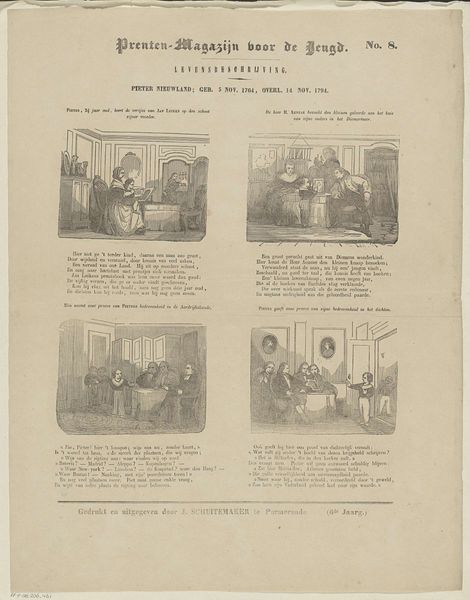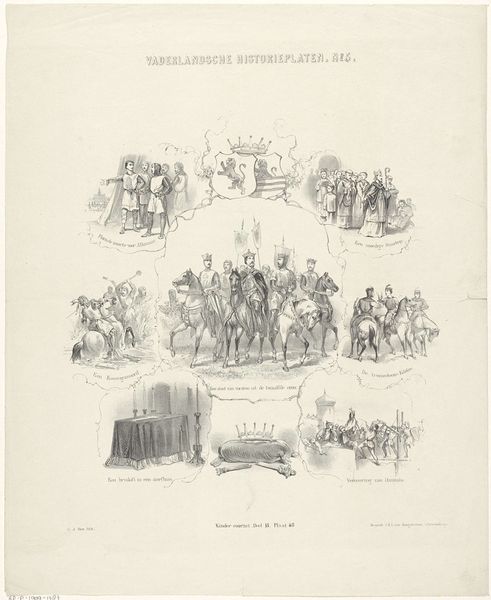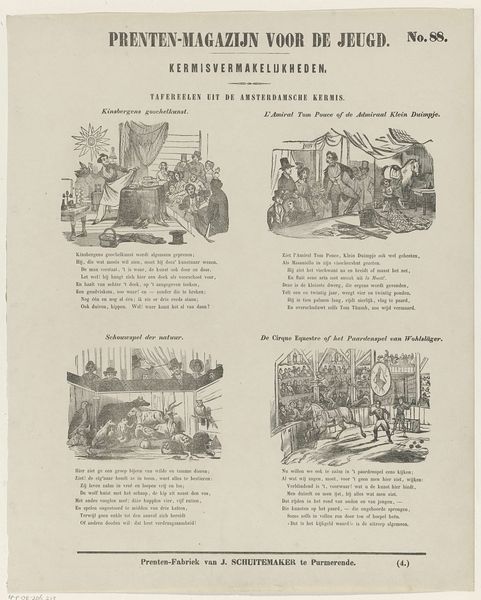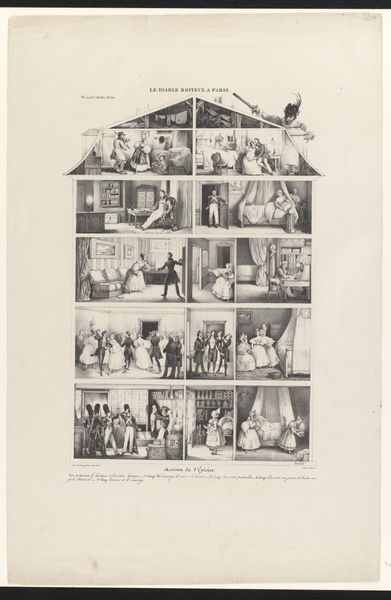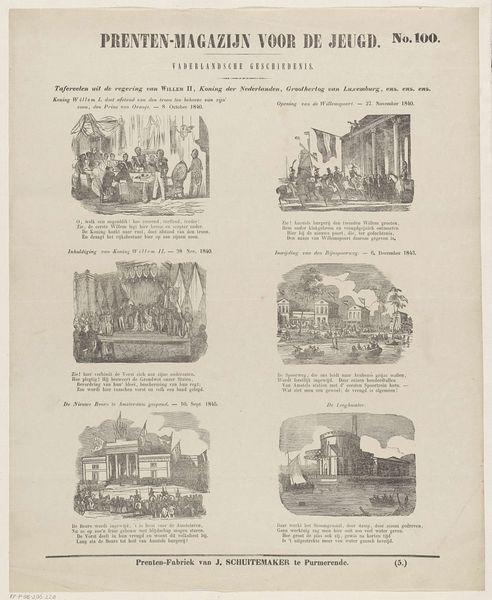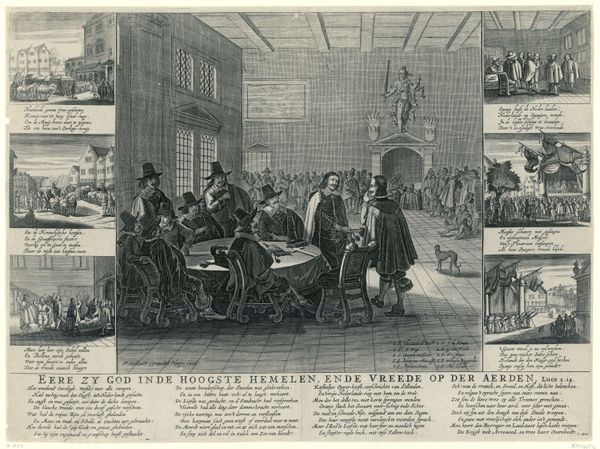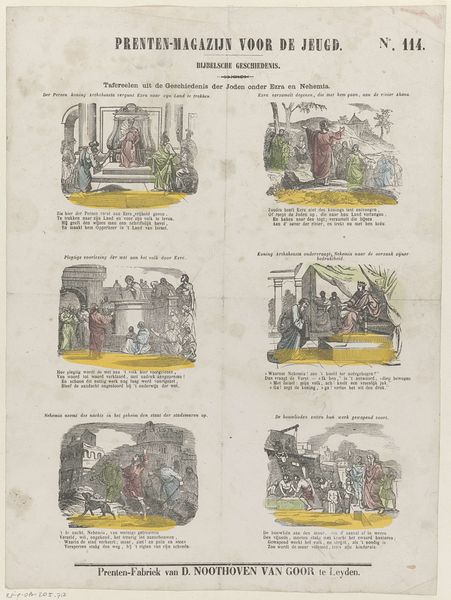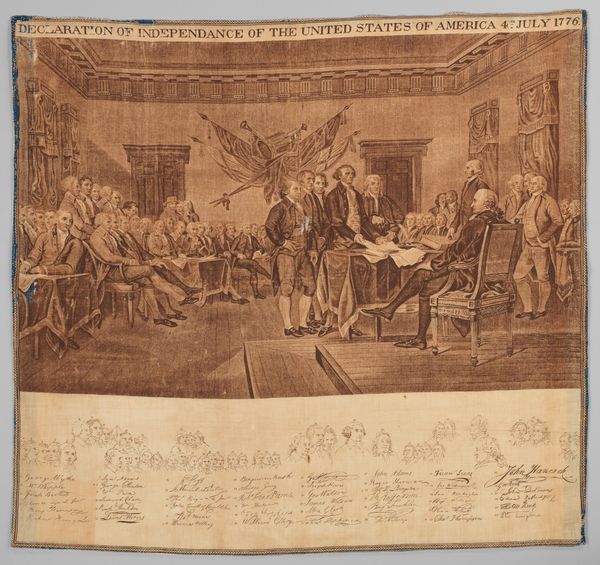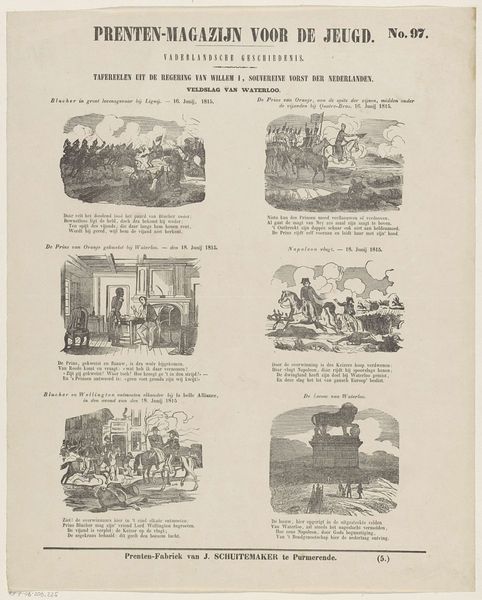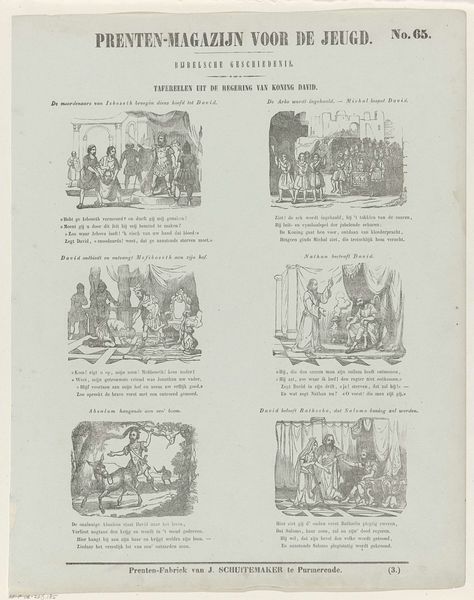
graphic-art, print, engraving
#
graphic-art
#
narrative-art
#
baroque
# print
#
history-painting
#
engraving
Dimensions: height 337 mm, width 444 mm
Copyright: Rijks Museum: Open Domain
Curator: This print, “Oprichting van de Verenigde Oostindische Compagnie, 1602,” created around 1700 or 1701, and currently held at the Rijksmuseum, speaks volumes about Dutch colonial power and its visual representation. What strikes you most about this graphic artwork? Editor: The sheer density of information is overwhelming! It's a baroque print showing the founding of the Dutch East India Company. All of the miniature scenes give it a very formal, almost administrative feel, like looking at a corporate report. How do you interpret this work? Curator: It's a fascinating example of how history is constructed and visually disseminated. Consider the implications of depicting this event nearly a century after it occurred. What narratives are being reinforced, and whose perspectives are centered? Notice the contrast between the organized interiors of the Dutch chambers and the implied "Indies," rendered as a textual list rather than a visual presence. Editor: I see what you mean. It's like the print is trying to exert control, not just over the Indies, but over how the Company itself is perceived. By presenting a neat image it obscures, or even silences, the violence and exploitation that it entailed. Curator: Precisely. And we should also consider how the print functioned within its contemporary society. Who was its intended audience, and what was its purpose? Was it celebratory propaganda, or a more nuanced commentary on the Company's role in Dutch society? Editor: So, understanding the print means looking beyond the surface depiction of the founding of the VOC? We also need to ask deeper questions about power dynamics, representation, and the very act of constructing historical narratives. It becomes much more interesting when viewed that way. Curator: Absolutely. This engraving offers an invaluable point of entry, encouraging a dialogue between art history and contemporary critical perspectives. Now we understand this artwork with a renewed awareness of its socio-historical implications.
Comments
No comments
Be the first to comment and join the conversation on the ultimate creative platform.
